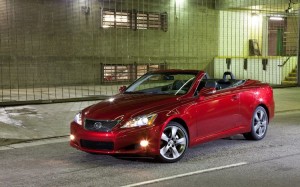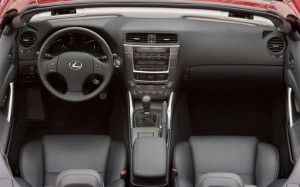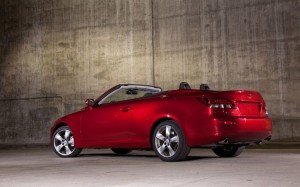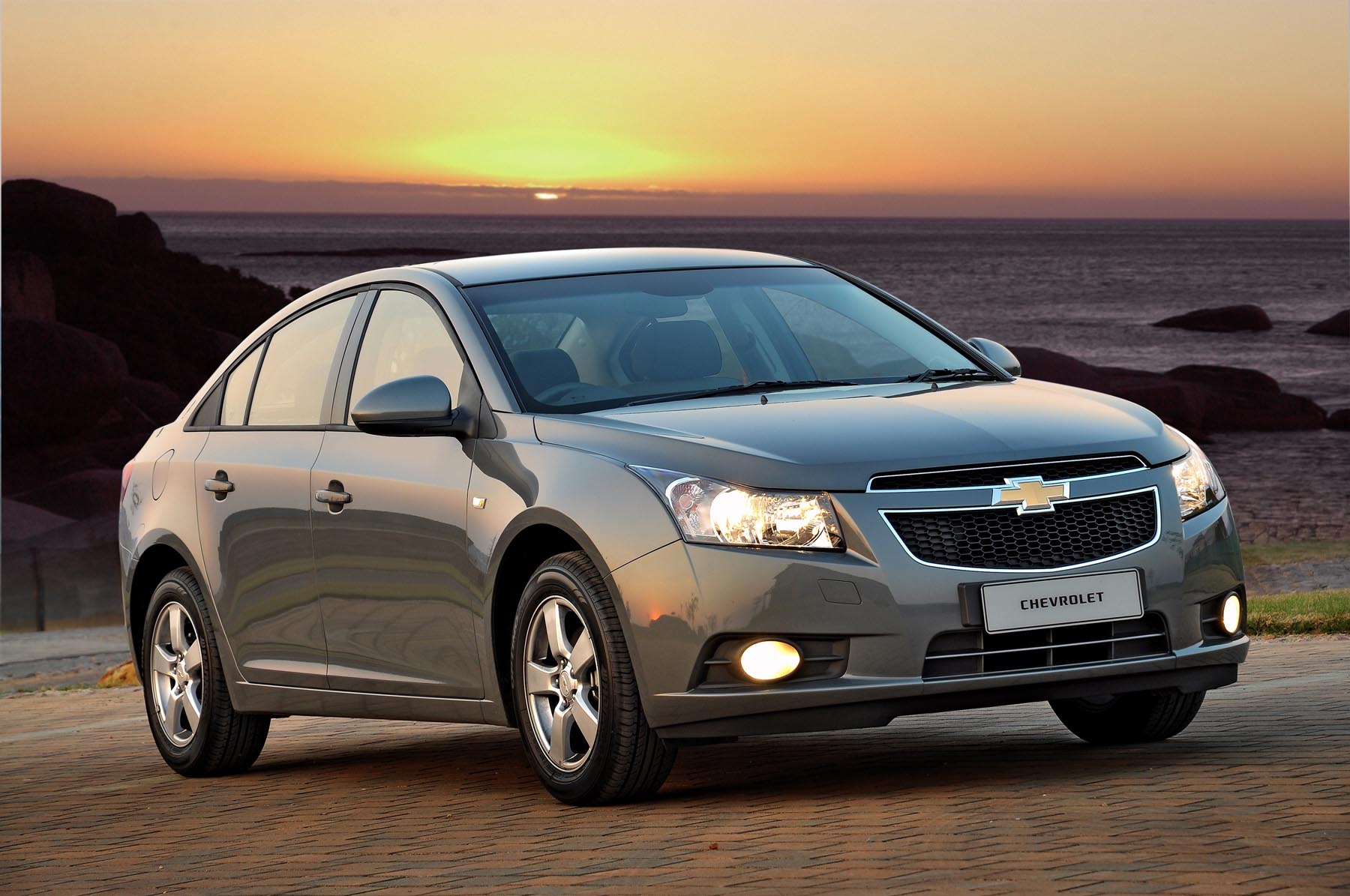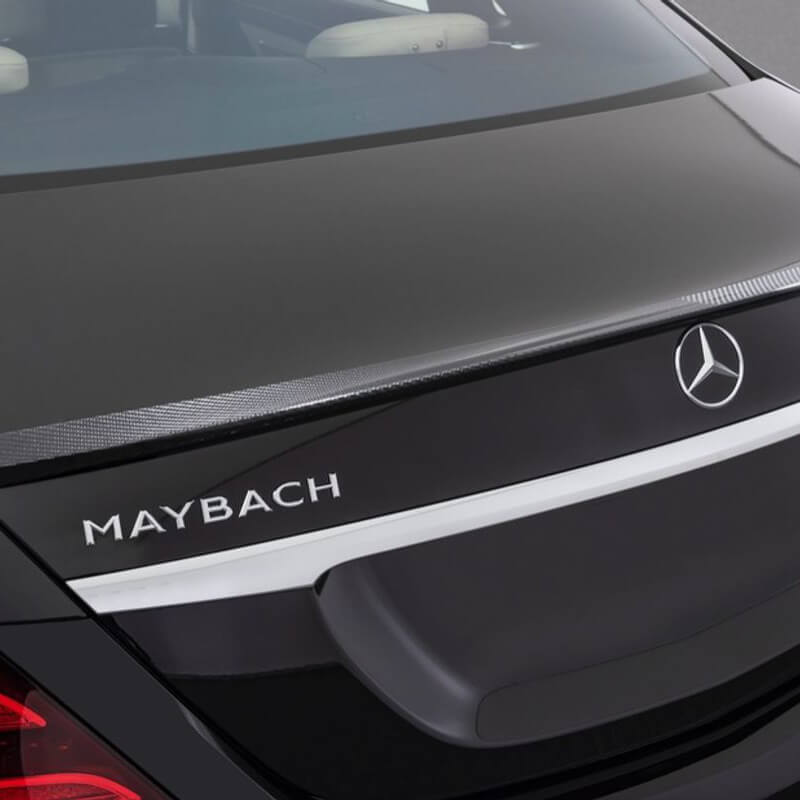2010 Lexus IS C
This just in: Lexus is serious about claiming more of BMW’s turf. When introduced nearly a decade ago, the IS 300 was a single-focus effort: one body style, one engine, take it or buy the BMW. The second-gen IS, launched in 2005, widened the view: two engines plus an all-wheel-drive version, but still served only in four-door-sedan form. Last year came the roaring, rumbling IS-F, Japan’s take on the M3. And now, the IS C, the first IS with two doors instead of four, plus a retractable folding hardtop — a lot like BMW’s.
You’ll recognize the C as a member of the IS family, yet every body panel save the hood is new. Besides the obvious — doors, fenders, folding top — the fascias, light clusters, and detailing are C specific. Overall length is increased 2.2 inches over the sedan. Otherwise, says Lexus, the trunk would have looked too high and too short. The chassis architecture remains the same, but a considerable amount of work was done to regain the structural rigidity lost by going topless. There are numerous trusses and triangulation braces underneath, in the rocker panel areas, and behind the front seats.
The top was designed, developed, and constructed in-house. It goes up and down quicker than any other in this category. Inside, the headliner covers everything. There’s not a brace or strut visible inside, and the effect is almost coupelike. Other aspects of the car are reengineered for top-down duty. For example, the audio system volume adjustments are reprogrammed when the top is down, and the HVAC system knows to deliver more air. The IS C has more trunk volume than do many retractables. There’s a handy button to power the passenger seat forward and aft, easing rear-seat access. There’s even a neatly engineered, removable windblocker — too bad that Lexus has the nerve to charge extra for it after doing so much work to make the IS C a complete convertible package. The top system makes use of steel, aluminum, and plastic panels. On average, an IS C is 360-380 pounds heavier than a comparably equipped sedan.
Powertrain offerings are the same as in IS sedans. The IS 250C runs Lexus’ 2.5L V-6, good for 204 hp and 185 lb-ft of torque. Take your choice between six-speed automatic and manual transmissions. The IS 350C is powered by a 3.5L V-6, cranking out 306 hp, and 277 lb-ft. Your only choice here is a six-speed automatic. We asked why the big engine isn’t offered with the enthusiast’s choice transmission, and never got a meaningful reply. There is a long list of standard features, as well as plenty of optional gear. As you’d expect, rear-seat room is so-so, but if the front passengers share their seat travel, it’s possible to pack a pair of adults in back for moderate jaunts.
We sampled all IS C variants: 2.5L and 3.5L engines; stick and automatic transmissions; standard 17-in. wheels and tires, and cars fitted with the optional 18-in. rolling stock. With that came a surprise. Like you, we normally head straight for the biggest engine, stiffest suspension, and largest boots on the order blank. Although that combination proved the most capable, it wasn’t the most pleasant. In order to appreciate the IS-C’s mission in life — stylish, luxurious, top-down transport — you have to get comfy with the fact that it’s a cruiser, not a racer.
The 3.5L’s 306 horses shake off the convertible’s extra 360-380 lb pretty easily. Lexus claims 0-60 in 5.8 sec, which feels right. The 2.5 works hard to deliver the same in 8.4 sec, but the difference isn’t as gaping as it sounds. Driven casually — as a near-lux convertible along California’s Pacific Coast Highway at sunset — it does just fine (make sure to set the ECT button on Power). These are typical Lexus engines: turbine smooth with a flat power curve, if a bit lifeless, slow to rev, and devoid of a tasty exhaust note. But they move the car nicely in cruise or commuter mode.
Lexus admits that, even with all the additional chassis rigidity measures undertaken, the IS C loses about 15% of its torsional stiffness compared with the sedan. This takes form as minor cowl shake and body tremors when the pavement is anything other than super smooth. It’s more noticeable with the top down and further accentuated in an example equipped with 18-in. wheels. Less is more in this case, since the 17s’ taller sidewalls absorb road impacts that would otherwise set the body a-wiggle.
No complaints on ride quality. The IS C is supple without being mushy. It’s quiet too. With the top up, there’s nary a squeak or creak from the top – impressive — and minimal windnoise. Top down, wind buffeting feels about the same as in other cars in this category. Pop for the wind-blocker, as it is very effective at reducing noise and buffeting and is easy for one person to install and remove.
As much as we love manual transmissions, we just don’t get it in this application. Although Lexus feels certifying and offering this model is necessary to keep cred against BMW, Infiniti, and others that do likewise, it feels out of place in the IS C, especially since it can be had only with the smaller engine. Believe it or not, the car feels zippier with the automatic, as opposed to the tall-geared stick.
Our pick of this litter is the IS 250C with the automatic transmission and standard 17-in. wheels and tires. It is the least expensive offering and has the best EPA mileage ratings. The standard rolling stock preserves ride quality and minimizes body wiggles. And the 2.5L/auto-trans combo is in keeping with the car’s character. If you’re less about speed than style, desire maximum creature features and entertainment options, and want to save around $6000 over a comparably equipped 3 Series, the IS C is a classy way to roll.
Sourced via motortrend.com

